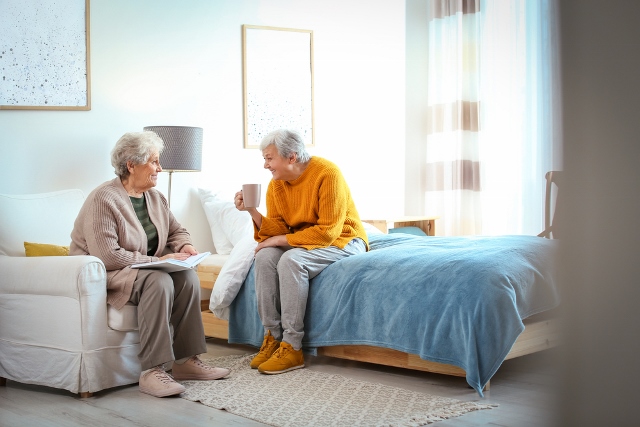News

Don’t put off tomorrow the care you need today. We are safely here for you. Click Here
Osteoporosis in Women: What Should You Know
July 5, 2022
Weakening of the bones of the body can occur without a woman's knowledge. Until a bone fracture occurs or a doctor runs a test, the bone weakness increases in silence. Your bones could suffer from a health issue known as osteoporosis, which can lead to serious health problems if left unchecked!
What is osteoporosis, and how does it occur?
Osteoporosis is a disease that impairs bone strength, making them more vulnerable to sudden and unexpected fractures. The symptoms often progress without immediate pain, which can be difficult to determine until the last minute. This disease commonly occurs within the hip, wrist, and spinal areas of an individual.
Who are the usual sufferers of osteoporosis?
Osteoporosis is an age-related condition that affects women more than men. On average, more than 80% (or eight out of 10) are female, and this condition affects an estimated ten million Americans, according to a study by The US Office Of Women's Health.
What are the usual symptoms of the disease?
While the symptoms of osteoporosis aren't determined immediately, once an individual does experience it, they may experience the following complications:
- Back pain caused by a broken or damaged vertebra
- Gradual height loss
- A bent posture
- Bones become more susceptible to further damage
How many people tend to get osteoporosis?
A Cleveland Clinic study has revealed that over 200 million individuals worldwide suffer from osteoporosis, with around 54 million of them coming from the United States alone. The study has also revealed that women are likely to suffer osteoporosis four times more than men, especially those who have passed their menopausal stage.
Additionally, one in two women and one in four men after reaching the age of 50 will suffer an osteoporosis-related fracture at least once in their lifetime. At the same time, 30% of them are expected to suffer from osteopenia, a condition that puts them at risk of osteoporosis.
What are some of the risk factors related to osteoporosis?
Several factors increase the likelihood that a person will develop osteoporosis, and understanding them will help prepare for dealing with the disease.
- Age - the older a person becomes, the more likely their bones will become weaker, thus, making them more vulnerable to fracture-related complications such as osteoporosis.
- Race and ethnicity - The Mayo Clinic has suggested that people of white and Asian descent tend to suffer from osteoporosis more likely than other individuals. The Cleveland Clinic ruled that African-American and Hispanic women are also at risk and are more likely than white females to die after suffering from a hip injury.
- Gender - Women are more prone to the disease than men.
- Body frame - individuals with smaller bodies have a greater risk of suffering from osteoporosis because they have lesser bone mass to rely on in time.
- Excess or lack of certain hormones in the body - people who have osteoporosis often experience its debilitating effects due to having too little or excess hormones. These can affect a person's bone strength and lead to an increased risk for certain other complications for specific individuals.
- Family history - this plays a part in having greater risks of suffering from osteoporosis.
- Lifestyle-related factors - whether it is eating unhealthy foods, not exercising regularly, drinking too much alcohol, or excessively using tobacco and other drug-related products, these could contribute to the weakening of bones, which can lead to several body complications including osteoporosis.
- Consumption of certain prescribed drugs - many medications can have harmful side effects on bones, including steroids and cancer treatments (i.e., breast care chemotherapy or surgery). It is important to speak with your healthcare provider or licensed pharmacist regarding these drugs and their potential long-term effects on bone health.
Conclusion
Osteoporosis is a disease that can cause harm to your bones. If not treated, it may lead to potentially life-threatening complications like fractures and osteopenia (low bone mass) if not taken care of right away. Be sure to find the right support needed to get ahead of the curve!
Visit us at RAMC for more information about our clinic locations and contact details.
References:
www.womenshealth.gov
www.mayoclinic.org
my.clevelandclinic.org
